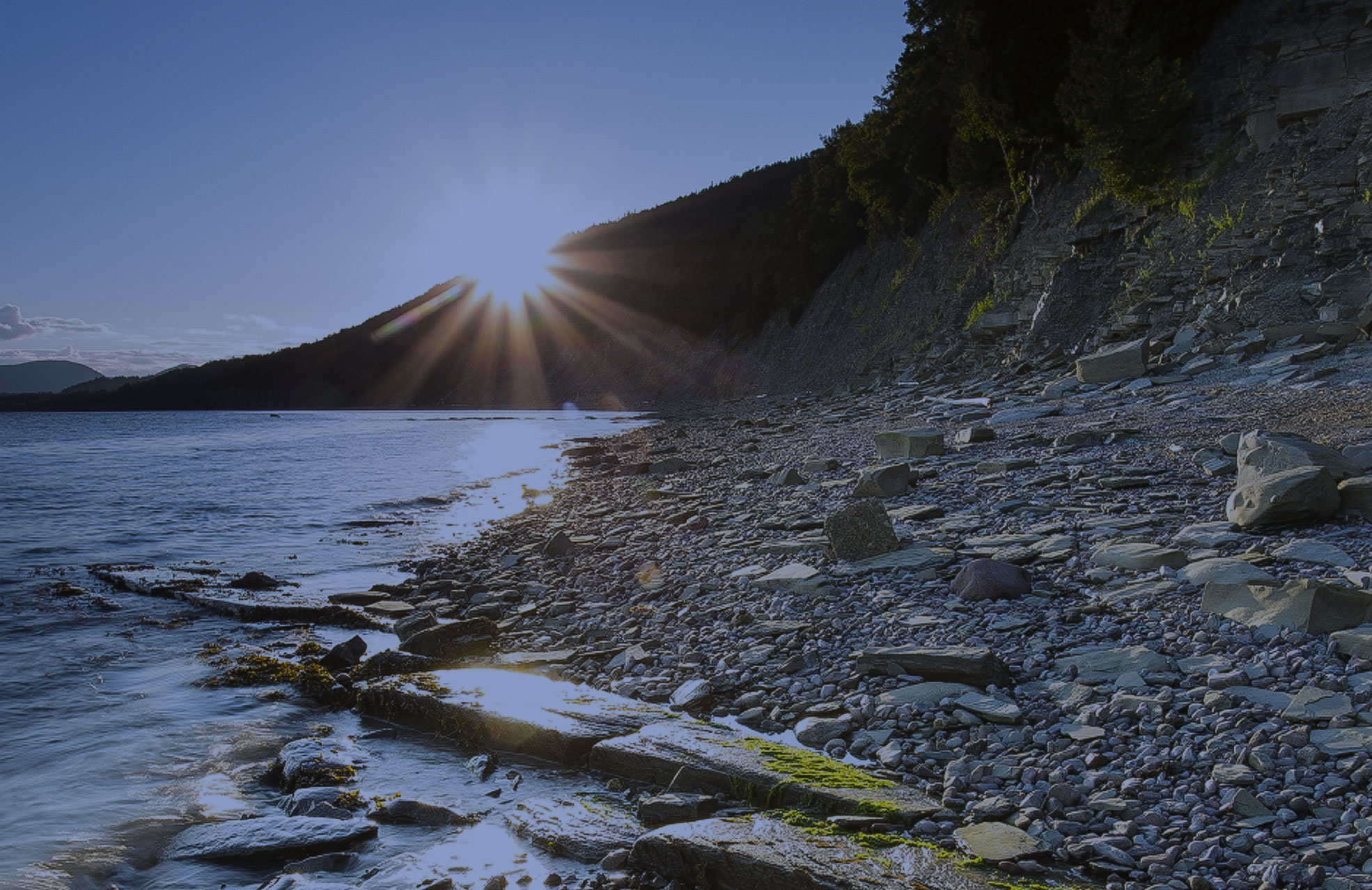
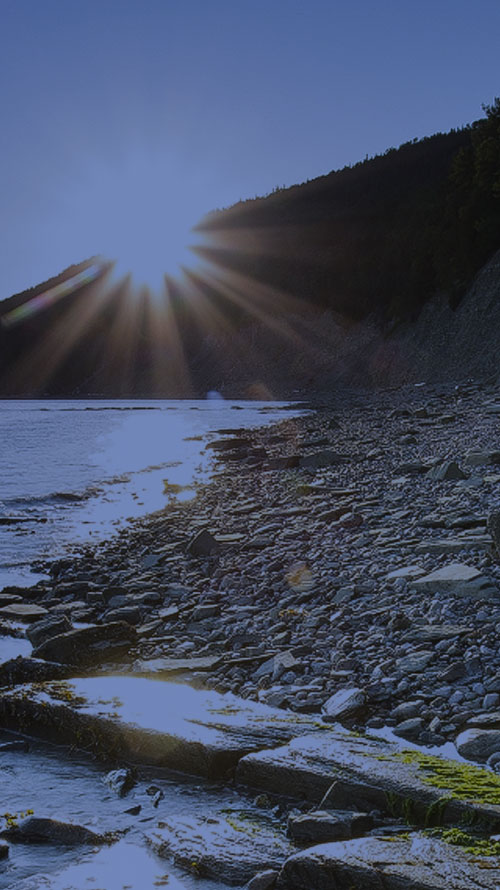
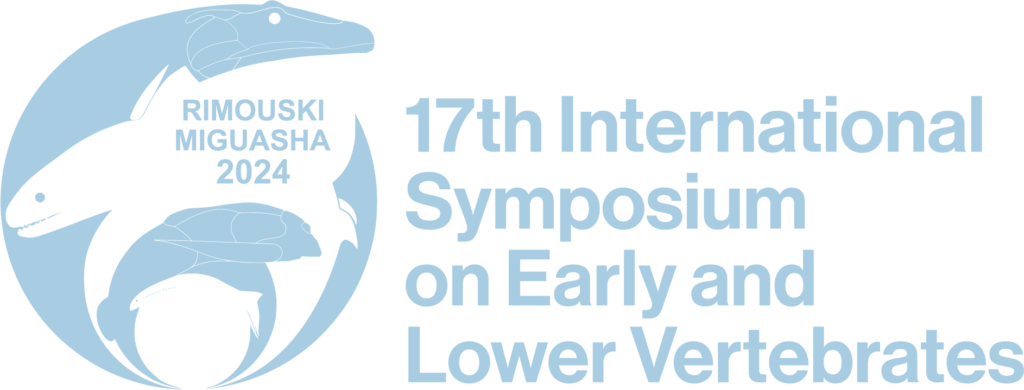
Dr. Alex Ritchie (1935-2023)
John Long, Kate Trinajstic & Sue Turner
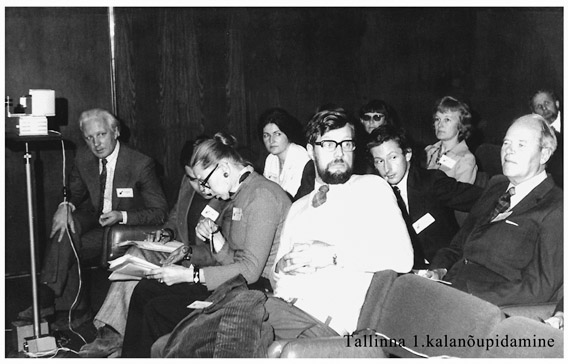
Born on the 15th August 1935, first son of oil shale miner Alexander Ritchie and Jean Fowle, a nurse’s aide. Alex was the first member of his family to graduate from University, attaining his Honours in Geology and Zoology in 1959 from the University of Edinburgh, and competing his PhD there on the famous Lesmahagow Silurian fish beds in 1963.
His first academic job was as a junior lecturer at Edinburgh University working with Prof Fred Stewart. From there Alex moved to Sheffield University as a lecturer and worked in the Palaeontology Department.
Alex came to Australia 1968 to take up his position as Curator of Fossils at the Australian Museum in Sydney.
Alex made huge contributions to palaeontology through his physical approach to collecting fossils and organising large and productive expeditions. His collections of Scottish fossils from Lesmahagow and from sites in Norway were taken with him to be registered in the Australian Museum collections.
Over the summer season of 1970-71 he worked in the Transantarctic Mountains of Antarctica as part the Zealand VUWAE 13 expedition, bringing Gavin Young with him, and many new kinds of Devonian fishes were found there. His most remarkable find was that the common placoderm genus Groenlandaspis, then only known from the Artic region in East Greenland, also occurred in Antarctica. Alex made many subsequent finds of other species of this fish in Australia, Ireland and other locations. Showing it to have a global distribution, but appearing earlier in Gondwana than northern hemisphere locations. Mt Ritchie was informally named after him.
Alex made major contributions to understanding the early evolution of jawless fishes and the transition from wormlike protochordate to the first jawless fishes (a 1960 Nature paper), including the then oldest fishes in the world with bony exoskeletons (Arandaspis & Porophoraspis from central Australia, at 460 million years old; published with Joyce Gilbert-Tomlinson in Alcheringa issue 1, in 1977). Alex collected at the famous Gogo site in the Kimberely in the early 1970s and made new collections of fish fossils from the Mulga Downs Group in western NSW, including the iconic taxon Wuttagoonaspis.
From 1993 onwards Alex arranged large scale excavations of a rich fossil layer containing complete impressions of several Late Devonian fishes near the town of Canowindra in NSW, following early finds there in the mid-1950s. He found some 4000 complete fish fossils that were deposited in an ancient billabong some 363 million years ago, by engaging the town residents and council in hiring bulldozers and equipment to make the collection of hundreds of large fossil-bearing slabs. This material contained new taxa of stem tetrapod fishes, including the first compete rhizodont ever found with skull completely intact, Gooloogongia. Alex later found complete phyllolepid placoderms at another site nearby at Merriganowry quarry. The genus Cowralepis revealed many new features about placoderm anatomy previously unknown. He went on to help set up the Age of Fishes Museum in Canowindra displaying the best specimens from the local collections.
One of Alex’s greatest contributions was his involvement searching out rare Cretaceous opalised fossils from the Lightning Ridge opal field, resulting in the acquisition of a nearly complete opalised pliosaur Umoonasaurus (also known as ‘Eric’) and the Cretaceous mammals Steropodon and Kollikodon. Among the other many prize fossils, he excavated for the Australian Museum collections were a near complete horned turtle Meiolania from Lord Howe Island, a well-preserved Diprotodon skeleton from Tambar Springs, and significant collections of Triassic fishes from the Somersby site.
Alex made many contributions towards fighting for science, standing up to creationists in public debates (and monitoring their every move by subscribing to their literature). He was the driving force behind the Australian Museum’s gallery of Human Evolution, which was opened by Dr. Richard Leakey who acclaimed it as one of the finest exhibitions showing the human story in the world at the time.
Alex passed away on the 16th of November 2023, leaving his wife Edith and daughter Shona and son Bruce, and grandchildren Angus, Marnie and Isla.
Publications
- Ritchie, A. 1960. A new interpretation of Jamoytius kerwoodi White. Nature 188, no. 4751, 647-649.
- Milnes, A. G. & Ritchie, A. 1960. Contribution to the geology of the Kvaenangen Window, Burfjord, Troms, Norway. Norsk Geologisk Tiddskrift 42, 77-102.
- Ritchie, A. 1963. Palaeontological studies of Scottish fish beds. (Unpublished Ph.D. Thesis, University of Edinburgh).
- Ritchie, A. 1964. New light on the morphology of the Norwegian Anaspida. Skrifter utgitt av det Norske Videnskaps-Akadem i Oslo. I. Matematisk-Naturvidenskapslig e Klasse, Ny Serie 14, 1-35. OR 1-21?
- Ritchie, A. 1967. Ateleaspis tessellata Traquair, a non-cornuate cephalaspid from the Upper Silurian of Scotland. J. Linn. Soc. (Zool.) 47, 311: 69-81.
- Ritchie, A. 1968a. New evidence on Jamoytius kerwoodi White, an important ostracoderm from the Silurian of Lanarkshire, Scotland. Palaeontology 11, 21-39.
- Ritchie, A. 1968b. Phlebolepis elegans, an Upper Silurian thelodont from Oesel, with remarks on the morphology of thelodonts. Pp. 81-88. In T. Oervig (ed.) ‘Current Problems of Lower Vertebrate Phylogeny’, 4th Nobel Symposium, Stockholm.
- Ritchie, A. 1968c. Lanarkopterus dolichoschelus (Stormer) gen. nov., a mixopterid eurypterid from the Upper Silurian of the Lesmahagow and Hagshaw Inliers, Scotland. Scott. J. Geol. 4: 317-338.
- Ritchie, A. R., 1969a. Ancient fish of Australia. Australian Natural History 16, 218-223.
- Ritchie, A. 1969b. Fossils can be Fascinating. Progress [Govt. Printer, New South Wales—1969], pp. 1-9.
- Ritchie, A. 1970. Glimpses of Australia’s Distant past. Hemisphere 14, 2-8.
- Ritchie, A. 1971a. New fossil discoveries in Antarctica. Modern World 1, 10-14.
- Ritchie, A. 1971b. Fossil fish discoveries in Antarctica. Australian Nat Hist 17, 65-71.
- Ritchie, A. 1971c. Ancient animals of Antarctica. Hemisphere 15(12), 12-16.
- Ritchie, A. 1972: Appendix. Devonian fish. In McKelvey, B.C., Webb, P.N., Gorton, M.P. & Kohn, B.P. Stratigraphy of the Beacon Supergroup between the Olympus and Boomerang Ranges, Victoria Land. 351–352. In Adie, R.J. (ed.) Antarctic Geology and Geophysics, Universitets Forlaget, Oslo.
- Ritchie, A. R., 1973. Wuttagoonaspis gen. nov., an unusual arthrodire from the Devonian of western New South Wales. Palaeontographica A 143, 58-72.
- Ritchie, A., 1974. ‘From Greenland’s icy mountains. . .’—a detective story in stone. Australian Natural History 18(2), 28–35.
- Sutherland, L. & Ritchie, A. 1974. Defunct volcanoes and extinct horned turtles. Australian Natural History 18(2), 44-49. [1978 on pdf]
- Ritchie, A. 1975. Groenlandaspis in Antarctica, Australia and Europe. Nature, London, 254, 569-573.
- Ritchie, A. & Sutherland, L. 1976. Geological Introduction. Pp? In Scenic Wonders of Australia. Reader’s Digest Pubs, Sydney.
- Ritchie, A. 1977. Fossil Vertebrates (of Australia). New Australian Encyclopedia 3rd edtn, Grolier Sydney, 3, 103-108.
- Ritchie, A. and Gilbert-Tomlinson, J. 1977. First Ordovician vertebrates from the Southern Hemisphere. Alcheringa, 111: 351-368.
- Ritchie, A. and Janvier, P. 1977. Le Genre Groenlandaspis Heintz (Pisces, Plaodermi, Arthrodira) dans le Devonien d’Asie. Comptes Rendues Academie de la Science, Paris, ser D, 284, 1385-1388.
- Ritchie, A. 1978. An Island Sanctuary. New discoveries of Meiolania on Lord Howe Island. Hemisphere 22(4), 2-7.
- Ritchie, A. 1979a. The Talgai skull story and the use – or misuse – of archives. The Artefact (1979) 4: 41-49.
- Ritchie, A. 1979b. Sea monster in opal – or the one that got away. Australian Natural History 19(12), 408-413.
- Ritchie, A. 1980. The Upper/ Late Silurian anaspid genus Rhyncholepis from Oesel, Estonia, and Ringerike, Norway. American Museum Novitates no. 2699, 1-18. July 11,
- Ritchie, A. 1981. First complete specimen of the dipnoan Gosfordia truncata Woodward from the Triassic of New South Wales. Records of the Australian Museum, 33(11), 606–616.
- Ritchie, A. 1982. Revealing the secrets of life’s history. Australian Natural History 20(11), 380-384.
- Ritchie, A. 1983a. Horned turtles and sea monsters in opal. Qantas Airways Inflight magazine March/april, 13-17.
- Ritchie, A. 1983b. Birdfooted dinosaur from Queensland – Muttaburrasaurus langdoni. In Quirk, S. & Archer, M. eds Prehistoric Animals of Australia, pp?
- Ritchie, A. 1983c. Giant killer of the Cretaceous seas. In Quirk, S. & Archer, M. eds Prehistoric Animals of Australia, pp?
- Ritchie, A. 1983d. First discoveries of pterosaurs in Australia. In Quirk, S. & Archer, M. eds Prehistoric Animals of Australia, pp?
- Ritchie, A. 1983e. A horned turtle from Lord Howe Island, Meiolania platyceps. In Quirk, S. & Archer, M. eds Prehistoric Animals of Australia, pp.
- Ritchie, A. 1983f. Reptiles of the Mind – the fascination of dinosaurs. Medical J. of Australia 2(12), 631-636.
- Campbell, K. S. W., Ritchie, A., Warren, J. W. and Young, G. C. 1984. Evolution & Biogeography of Early Vertebrates. Proc. Linn. Soc. N.S.W. 107 (3), Forward + p 147-47
- Ritchie, A. 1984a. Conflicting interpretations of the Silurian agnathan, Jamoytius. Scottish Journal of Geology 20(2), 249-256.
- Ritchie, A., 1984b. A new placoderm, Placolepis gen. nov. (Phyllolepidae) from the Late Devonian of New South Wales, Australia. Proceedings of the Linnean Society of New South Wales 107(3), 321-353.
- Archer, M., Flannery, T.F., Ritchie, A., and Molnar, R. 1985. First Mesozoic mammal from Australia—an early Cretaceous monotreme. Nature 318: 363–366.
- Ritchie, A. 1985a. Ainiktozoon loganense Scourfeld, a protochordate? from the Silurian of Scotland. Alcheringa 9, 117-142.
- Ritchie, A. 1985b. Opal fossils – Flashes from Lightning Ridge. Australian Natural History 21, pp?
- Ritchie, A. 1985c. Arandaspis prionotolepis Ritchie and Gilbert-Tomlinson, 1977. The Southern Four-eyed Fish. In Rich PV, van Tets, GF & Knight F. eds Kadimakara. Extinct vertebrates of Australia. Pioneer Design Studios, Clayton, Vic. 95-101. [Australian Ordovician fish on pdf]
- Ritchie, A. 1985d. Devonian fishes from Gogo. In Rich PV, van Tets, GF & Knight F. eds Kadimakara. Extinct vertebrates of Australia. Pioneer Design Studios, Clayton, Vic., pp?
- Ritchie, A. 1987a. Jurassic fishes of Lake Talbragar, New South Wales: Aetheolepis mirabilis, Leptolepis gregarious and Uarbryichthys latus. In: Hand, S. J. & Archer, M. (eds) The Antipodean Ark. Creatures from Prehistoric Australia. Angus & Robertson, N. Ryde, 22–24.
- Ritchie, Alex 1987b. The Great Somersby Fossil Fish Dig. Australian Natural History 22, no. 4, 146-150 [Autumn ] Triassic shark xenacanth lungfish Saurichthys Promecosomina Cleithrolepis 2nd shark? In Peter Watson coll – lost
- Ritchie, A. 1987c. Foreword, in Mackness, Brian S. 1987. Prehistoric Australia. 4000 million years of evolution in Australia. Golden Press, Sydney.
- Ritchie, A. 1987d. Permian fishes of Queensland’s coal measures: Ebanaqua ritchiei. in The Antipodean Ark. Creatures from Prehistoric Australia (Hand, Suzanne J. & Archer, M. eds: Ill. Peter Schouten, Angus & Robertson, N. Ryde, p 18-19. Michael Leu coll
- Rich, Patricia Vickers, Thomas H. V. Rich, Eric McClellan, Ron Miller, Kerrie Aulsebrook, Helen Edmonds, Rosemary Taylor, Alexander Ritchie, Mike Traynor, and Brian Smith. 1987. Esso’s return of the dinosaurs. Museum of Victoria Council, Melbourne. 51 pp.
- Ritchie, A. 1991a. New discoveries of Ordovician vertebrates from the Northern Territory, Australia. CAVEPS, Alice Springs, April, Abstracts, 1 p.
- Ritchie, A. 1991b. New discoveries of Ordovician vertebrates from the Northern Territory, Australia. In Vezina D and Arsenault M eds. 1991. Abstracts 7th International Symposium Studies of Early Vertebrates, July, Parc de Miguasha, PO Box 183, Nouvelle (Quebec, Canada). p. 39.
- Ritchie, A., Wang, S-T., Young, G.C. & Zhang, G-R 1992. The Sinolepidae, a family of antiarchs (placoderm fishes from the Devonian of South China and eastern Australia. Records of the Australian Museum, 44(3): 319–370 or 625-634.
- Young, G.C., Long, J.A. & Ritchie, A. 1992. Crossopterygian fishes from the Devonian of Antarctica: systematics, relationships and biogeographic significance. Records of the Australian Museum (Suppl.), 14, 1–77.
- Märss, T. and Ritchie, A., 1993. The morphology and relationships of thelodonts, Siluro-Devonian agnathans. CAVEPS 93, Program and abstracts, Adelaide, April 19-21. Records of the South Australian Museum 27: 2pp; Adelaide.
- Ritchie, A., 1993. The great Canowindra Devonian fish kill. In CAVEPS 93, Program and abstracts, Adelaide, April 19-21.
- Ritchie, A., 1993. The great Devonian Canowindra fish-kill. In The Fossil Collector, May 1993: 29-33.
- Märss, T. & Ritchie, A. 1994. On the Loganellia taiti Zone.- In: Schönlaub, H.P. & Kreutzer, L.H. (eds), IUGS Subcommission on Silurian Stratigraphy – Field Meeting August 1994: Eastern + Southern Alps, Austria, in memory of H. Jaeger.- Ber. Geol. B.-A. 30: 144-145; Wien.
- Neef, G., Bottrill, R.S., Ritchie, A., 1995. Phanerozoic stratigraphy and structure of the northern Barrier Ranges, western New South Wales. Australian Journal of Earth Sciences 42, 557–570.
- Ritchie, Alex, 1995. Fossils older than Dinosaurs. Leaflet 1p [given out Sept 2002 Cambridge] Canowindra Devonian mass kill.
- Märss, T. & Ritchie, A. 1998. Articulated thelodonts (Agnatha) of Scotland. Transactions of the Royal Society of Edinburgh: Earth Sciences 88 (for 1997), 143-195.
- Johanson, Z. & Ritchie, A. 1999. Sarcopterygian fishes from the Hunter Siltstone (Late Famennian) near Grenfell, NSW, Australia. In Metcalfe, I. ed. IGCP 411 & 4231 Where Worlds Collide: faunal and floral migrations and evolution in SE Asia-Australasia. The University of New England, Armidale, Australia, 29 November-2 December, 1999. Abstracts, Asia Centre, UNE, Armidale NSW 2351, p. 37.
- Basden, A., Young, G.C., Coates, M.I. & Ritchie, A. 2000. The most primitive osteichthyan braincase? Nature, Lond. 403, 185-188.
- Johanson, Z. & Ritchie, A. 2000a. A new Late Famennian lungfish from New South Wales, Australia, and its bearing on Australian-Asian relations. Alcheringa 24, 99-118.
- Johanson, Z., & Ritchie, A., 2000b. Rhipidistians (Sarcopterygii) from the Hunter Siltstone (late Famennian) near Grenfell, NSW, Australia. Mitteilungen aus dem Museum fuer Naturkunde in Berlin. Geowissenschaftliche Reihe 3, 111–136. Holoptychius
- Ritchie, A. & Edgecombe. G. 2001. An odontogriphid from the Upper Permian of Australia. Palaeontology, 44, 861-874. – Queensland Rangal coal measures
- Ritchie, A. 2002: A new genus of groenlandaspidid arthrodire (Pisces; Placodermi) from the Early-Middle Devonian Mulga Downs Group of western N.S.W. In Brock, G.A. & Talent, J.A. (eds): First International Palaeontological Congress, 2002, Macquarie University, Sydney, Australia. GeologicaJ Society of Australia, Abstracts 68, 1 37
- Johanson, Z., Ahlberg, P.E., Ritchie, A., 2003. The braincase and palate of the tetrapodomorph sarcopterygian Mandageria fairfaxi: morphological variability near the fish–tetrapod transition. Palaeontology 46, 271–293.
- Long, J.A., Burrow, C.J., Ritchie, A., 2004. A new ischnacanthid acanthodian from the Upper Devonian Hunter Formation near Grenfell, New South Wales. Alcheringa 28, 147–156.
- Ritchie, A., 2004. A new genus and two new species of groenlandaspidid arthrodire (Pisces: Placodermi) from the Early–Middle Devonian Mulga Downs Group of western New South Wales, Australia. In: Young, G.C. (Ed.), Proceedings of Symposium 6 (Palaeozoic Vertebrates): First International Palaeontological Congress (IPC 2002). Sydney, Australia, July 2002. Fossils and Strata 50, pp. 56–81.
- Ritchie, A. 2005. Cowralepis, a new genus of phyllolepid fish (Pisces, Placodermi) from the Late Middle Devonian of New South Wales, Australia. Proc Linn Soc NSW 125:215-259.
- Ritchie, A 2006. The great Devonian fish kill at Canowindra. Chapter 8, 159-184.In: Merrick JR ; M. Archer; G. M. Hickey; M. S. Y. Lee (eds) Evolution and biogeography of Australasian vertebrates. Australian Scientific Publishing, Oatlands, NSW.
- Carr, R. K., Z. Johanson, and A. Ritchie, 2007b. Ontogeny and phylogeny of the gnathostome branchial skeleton. 40th Anniversary Symposium on Early Vertebrates/Lower Vertebrates, Uppsala. Blom, Henning & Brazeau, M.D. eds. Ichthyolith Issues Special Publication 10:24-25.
- Carr, R.K., Johanson, Z., & Ritchie, A. 2009. The phyllolepid placoderm Cowralepis mclachlani: insights into the evolution of feeding mechanisms in jawed vertebrates. J. Morphol. 270, 775–804, https://doi.org/10.1002/jmor.10719.
- Davies, Neil S., Ivan J. Sansom, Nicoll, Robert S. and Ritchie, Alex 2011. Ichnofacies of the Stairway Sandstone fish-fossil beds (Middle Ordovician, Northern Territory, Australia). Alcheringa 35, 553-570.
- Sansom, I. J., N. S. Davies, M. I. Coates, R. S. Nicoll, and A. Ritchie. 2012. Chondrichthyan-like scales from the Middle Ordovician of Australia. Palaeontology 55:243–247.
- Johanson, Z., Ahlberg. P.E. & Ritchie, A. 2013. First record of Porolepis (Sarcopterygii; Porolepiformes) from eastern Gondwana. Canadian Journal of earth Sciences 50: 249-253. New species Porolepis foxi.
- Johanson. Z., Trinajstic, K., Carr, R. & Ritchie, A. 2013. Evolution and developmenst of the synarcual in early vertebrates. Zoomorphology 132: 95-110.
Taxa named after Alex Ritchie
- Austrophyllolepis ritchiei Long 1984 ‘placoderm’ from Victoria
- Bothriolepis alexi Young 1989 large ‘placoderm’ from Antarctica
- Kollikodon ritchiei Flannery et al 1995 opalized monotreme from Lightning Ridge
- Ritchieichthys nibili Ivan Sansom et al 2013 Ordovician jawless fish
Taxa named by Alex Ritchie (25 taxa- 20 genera, 25 species: 1 new mammal, 24 fishes)
- 1973 Wuttagoonaspis fletcheri
- 1975 Groenlandaspis antarcticus
- 1977 Arandaspis prionotolepis, Porophoraspis crenulat
- 1984 Placolepis budawangensis
- 1992 Koharolepis, Notorhizodon, Platyethmoidea, Mahalalepis, Vorobjevaia, Grenfellaspis, Xichonolepis, Dayoshania
- 1995 Steropodon galmani
- 2000 Eusthenodon gavini, Yambira thomsoni, Adelargo schultzei
- 2004 Grenfellacanthus zerinae, Mulgaspis evansorum, M. altus
- 2005 Cowralepis machlachlani
- 2011 Sheilia taitei, Lanarkia lanceolata
- 2012 Tantalepis gatehousie
- 2013 Porolepis foxi.
See also
Dr Alex Ritchie dies (smh.com.au)
Dr. Habil. Valentina Karatajūtė-Talimaa (1930 – 2022)
Sue Turner

Valentina Nikolaeyevna Karatajūtė-Talimaa, Lithuanian, palaeoichthyologist supreme, Honorary member of the Society of Vertebrate Paleontology, died in early August in Vilnius, Lithuania.
Valya or Valja, as we affectionately knew her, devoted over half a century of her life to the studies of Palaeozoic agnathans and early fish, including field work in the far reaches of the northern hemisphere. She became an internationally well-recognized authority in her field and inspired and collaborated with students and colleagues over six decades (e.g., Grigelis and Turner 2006, Schultze et al. 2009).
Valya was born on December 7th, 1930 in Lazdijai, southern Lithuania (an independent republic at the time with Kaunas as capital). She took her first degree and moved then to be a student of Dmitri V. Obruchev in Moscow. Returning to Vilnius she became an important member of the team at the then Institute of Geology and Geography of Lithuania, carrying on the long tradition of palaeoichthyological work in the E Baltic region (Kaljo 2018).
Researches of the Devonian and Silurian geology and palaeontology in all of Northern Eurasia performed in her years are of great importance for better understanding of evolution of the earliest Palaeozoic vertebrates. Valya discovered and described many new taxa belonging to the Thelodonti, Tesakoviaspidida, Heterostraci, Osteostraci, Monogolepidida, Chondrichthyes, and Acanthodii from across the former Soviet Union and Baltic states.
Valya took part in a large international team which compiled the Silurian and Devonian biozonation schemes based on the research data on the Palaeozoic microvertebrates; she was Lithuanian leader in UNESCO: IUGS IGCP project No. 328 Palaeozoic Microvertebrates that was devoted to this work. Its results were approved in 2000 by the International Devonian Stratigraphic Commission.
Much of Valya’s work in numerous publications was devoted to the thelodonts, heterostracans and ‘placoderm’ of the Ordovician and Lower Silurian and Lower–Upper Devonian of the Russian Arctic, Severnaya Zemlya Archipelago, and Siberian Plate. Her important achievements include the helenolepid and nikoliviids thelodonts, detection of a new type of dentinous tissue and description of a new Upper Ordovician–Lower Silurian vertebrate order, Tesakoviaspidida n. ord. in 2004, and recognition of a major group of early shark-like vertebrates, the Mongolepidida. Students include Jouzas Valiukevicius, Ervins Luksevics and Zivile Zigaete.
There is a bench dedicated to her at Kairėnai botanical garden in Vilnius University. She leaves two children and grandchildren.
Taxa named after Valentina Karatajūtė-Talimaa
- Cometicercus talimaae Wilson & Caldwell, 1998
- Corvaspis karatajuteae Halstead Tarlo, 1965
- Talivalia Märss Wilson Thorsteinsson, 2002
- Talimaalepis Zigaite 2004
- Valyalepis Turner, 1995
Ian Macadie (1944 – 2024)
Sue Turner & Al Mannering with help from Roger S. Miles

Charles Ian Macadie was born April 4th 1944 in Scotland and in the late 1950s went to work in the former British Museum (Natural History) in South Kensington, London, as assistant to Harry Toombs and under Errol White in the Fossil Fish section of Palaeontology and later for Roger Miles. Here he curated and prepared Palaeozoic fish and even collected in the Achanarras district. Later he went to work briefly in museums in the USA, finally moving to Australia in 1972 where he made a fresh start working for Alex Ritchie at the Australian Museum, Sydney. He moved further to a career in computer operations in Auckland, New Zealand and finally settled into a palaeontological job at the Christchurch Museum.
Ian published papers on palaeontological techniques, ultrasound, fibre optics and the oldest vertebrate fossils found in New Zealand, notably Devonian thelodonts and placoderms.
After a short illness following a stroke in late 2023, he died on February 7th 2024, aged 79. Ian is survived by his wife, Dawn, and three children.
Publications
- Macadie, C.I. 1985. Devonian fossil fishes of Reefton, New Zealand. In Hornibrook Symposium, 1985, extended abstracts. Geol. Surv. N.Z. Rec. 9: 73-75
- Macadie, C.I. 1997. New Zealand’s oldest fossil vertebrates; the Reefton fishes. Geological Society of New Zealand Miscellaneous Publication 95A: 109.
- Macadie, C.I. 1998: Lower Devonian fossil fishes from Reefton, New Zealand. Records of the Canterbury Museum 12: 17–29.
- Macadie, I. 2001. The Lower Devonian fishes of Reefton. CAVEPS, Christchurch? New Zealand, Abstracts p. 22. Thelodonts Waitahu Outlier NE of Reefton Westland – fish found by Jenkins 1967
- Macadie, I. 2002. Thelodonts and conodonts from the Lower Devonian of New Zealand. Alcheringa 26, 423-433.
- Turner, S, Trinajstic, K., Hairapetian, V., Janvier, P. & Macadie, I. 2004. Thelodonts from western Gondwana. In Richter, M. ed. 10th Early/Lower Vertebrates; IGCP 491 Symposium, abstract, 1p.
- Macadie, C.I. 2007: A placoderm fish plate from the Lower Devonian of Reefton, New Zealand. Records of the Canterbury Museum 21: 21–26.
- King, Carolyn M., Clive D. Roberts, Ben D. Bell, R. Ewan Fordyce, Robert S. Nicol, Trevor H. Worthy, Chris D. Paulin, Rod A. Hitchmough, Ian W. Keyes, Alan N. Baker, Andrew L. Stewar T, Norton Hiller, Robert M. McDowall, Richard N. Holdaway, Robin P. Mcphee, Werner W. Schwarzhans, Alan J. D. Tennyson, Seabourne Rust, & Ian Macadie 2009. Phylum CHORDATA lancelets, fishes, amphibians, reptiles, birds, mammals. In, New Zealand Inventory of Biodiversity, Canterbury University Press, Christchurch, 433-553.
Prof. Yvon Pageau (1925 – 2023)
Richard Cloutier
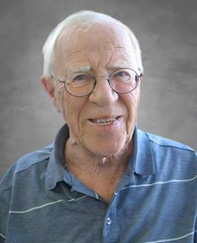
Yvon Pageau, the first French-Canadian vertebrate paleontologist, was born on December 12 1925 and died on December 5, 2023, at the venerable age of 97.
Father Yvon Pageau, S.J., received his master’s degree in biology from Fordham University, a private Jesuit university in New York City, USA, in 1963. The following summer, he spent time at the University of Chicago where he met Robert Denison. Subsequently, he graduated from the Sorbonne Université in Paris, France, with a doctorate in paleontology under the supervision of the renowned French paleoichthyologist, Prof. Jean-Pierre Lehman, who was the director of the Institut de Paléontologie at the Muséum d’Histoire naturelle de Paris.
After completing his doctorate, he was hired as a faculty member in the Department of Earth Sciences at the Université du Québec à Montréal (UQAM) where he taught Vertebrate Paleontology, Human Paleontology, Historical Geology and Economics of Geological Resources in the 1970s to 1990s. In the late 1970s, Yvon was my teacher for my first courses in vertebrate paleontology and encouraged me to pursue in the field. I still remember his hoarse voice, not only teaching but also telling us dynamic stories about evolution. He also introduced me to Marius Arsenault, the first director of the Parc de Miguasha at the time, who completed his master’s degree under Yvon Pageau.
Yvon Pageau discovered numerous fossil fish localities in the Devonian Gaspé Sandstones during the summers of 1965 and 1966. He published a few papers written in French on the Devonian ichthyofaunas from the Gaspé Sandstones. In 1968 and 1969, he published three papers, parts of his doctoral thesis, describing many osteostracans (Cephalaspis, subsequently assigned to a new genus in his honor, Yvonaspis), arthrodire ‘placoderms’ (Phlyctaenaspis, Quebecaspis, Gaspeaspis, Cartieraspis, Kolpaspis, Laurentaspis and Batteraspis; many of these taxa were new genera, some of which were subsequently synonymized), ‘acanthodians’ (Climatius, Mesacanthus), and chondrichthyans (Machaeracanthus, Ctenacanthus) from the Emsian of eastern Québec and northern New Brunswick. At the age of 95, he published on new materials of the arthrodire Desbiensaspis and Cartieraspis from the York River Formation at L’Anse-à-Brillant from the eastern Gaspé Peninsula. He not only described thoroughly articulated and disarticulated specimens, but he also reported precise stratigraphic information as well as complementary associated flora and invertebrate fauna.
After his retirement, Yvon Pageau became an active public speaker, giving lectures on the evolution of humans and on the French paleontologist and theologian Pierre Teilhard de Chardin. Yvon Pageau was very fond of Teilhard de Chardin, naming the fossil vertebrate collections of UQAM in his honor and contributing to the Teilhard de Chardin Centre in Montreal. Yvon was one of the founding members of the Société de paléontologie du Québec. In 2010, Yvon received the Elsa and László Horváth Prize, recognizing his exceptional achievements in mineralogy and paleontology on the Quebec, Canadian, and international scientific scenes.
Yvon passed away, leaving his children Erik, Geneviève, and his grandchildren Alexandra and Léo Pichet, and Marc-André and Charlie Pageau.
Publications
- Pageau, Y. 1968. Nouvelle faune ichthyologique du Dévonien moyen dans les Grès de Gaspé (Québec), 1. Géologie et écologie. Le Naturaliste canadien, 95: 1459-1497.
- Pageau, Y. 1969a. Nouvelle faune ichthyologique du Dévonien moyen dans les Grès de Gaspé (Québec). II. Morphologie et Systématique, 1re section : A.- Euryptérides, B.- Ostracodermes, C.-Acanthodiens et Sélaciens. Le Naturaliste canadien, 96: 399-478.
- Pageau, Y. 1969b. Nouvelle faune ichthyologique du Dévonien moyen dans les Grès de Gaspé (Québec). II. Morphologie et systématique, 2e section : Arthrodires. Le Naturaliste canadien, 96: 805-889.
- Pageau, Y. 1982. Forillonaspis, nouvel Arthrodire du Dévonien moyen des Grès de Gaspé, Québec. Le Naturaliste canadien, 109: 1-11.
- Pageau, Y. 1984. La Gaspésie et ses fossiles. Gaspésie, 29, nos 3-4 : 22–27
- Pageau, Y. 1990. Le Phénomène humain et l’évolution. Méridien, Montréal, 519 p.
- Pageau, Y. 1993. Hydro Québec, navire amiral ou bateau ivre ? Vermette, Boucherville, 171 p.
- Pageau, Y. 2003. La main de l’homme. Méridien, Montréal, 208 p.
- Pageau, Y. 2021. Découverte de deux spécimens rares d’Arthrodires, poissons fossiles de 400 millions d’années, dans les Grès de Gaspé, Québec. Le Naturaliste canadien, 145 : 79-88.
- Pageau, Y. & Prichonnet, G. 1976. Interprétation de la paléontologie et de la sédimentologie d’une coupe géologique dans la Formation de Battery Point (Dévonien moyen) Grès de Gaspé. Le Naturaliste canadien, 103: 111-118.
Taxa named after Yvon Pageau
- Yvonaspis Belles-Isles 2011 osteostracan from the Gaspé Sandstones
- Pageauaspis, Denison 1978 phlyctaenid ‘placoderm’ from the Gaspé Sandstones